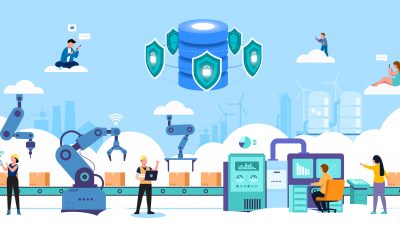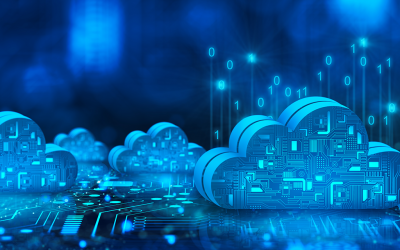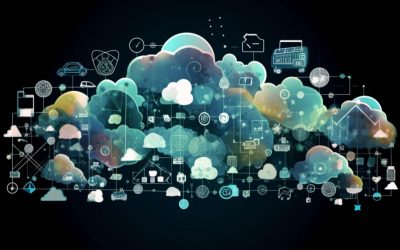Abstract:
In the rapidly evolving landscape of technology, modernizing mainframe applications has become a critical endeavor for organizations seeking to leverage the benefits of cloud computing, agility, and enhanced user experiences. Mainframe modernization on the cloud offers significant benefits for organizations, including cost reduction, scalability, enhanced security, and opportunities for innovation. By migrating mainframe systems to the cloud, organizations can reduce infrastructure costs and operational expenses while leveraging the elastic scalability and flexibility provided by cloud platforms. The cloud environment also enhances security measures and enables the integration of modern technologies like AI, ML, and big data analytics with mainframe systems, fostering innovation and enabling actionable insights. However, mainframe modernization on the cloud comes with challenges such as legacy system complexity, data migration, and application modernization. Organizations should plan carefully, conduct a thorough assessment, and adopt a phased approach to ensure a successful transition to the cloud.
The objective of this whitepaper is to provide a comprehensive overview of the approaches, tools, and best practices involved in modernizing mainframe applications. By understanding the challenges and available options, organizations can make informed decisions and successfully navigate the modernization journey.
Scope – This whitepaper focuses on the modernization of mainframe applications and excludes mainframe hardware considerations. It explores various approaches such as rehosting, replatforming, refactoring, rebuilding, and replacing. Additionally, it delves into the tools and best practices necessary for successful modernization.
- Challenges of Mainframe Modernization
- Legacy Infrastructure and Dependencies: Mainframe applications often rely on legacy infrastructure and dependencies that are not easily portable to modern platforms. These dependencies can include specific hardware, operating systems, and proprietary software, making it challenging to migrate or integrate with newer technologies.
- Complexity and Monolithic Architecture: Mainframe applications typically exhibit complex and monolithic architectures that hinder agility, scalability, and maintainability. Modernization requires breaking down these monoliths into modular components that can be independently managed, deployed, and scaled.
- Outdated Development Practices: Legacy mainframe systems often employ outdated development practices and programming languages that are no longer widely supported. This poses challenges in attracting and retaining skilled developers, as well as adapting to modern development methodologies and tools.
- Skills and Knowledge Gap: Mainframe technology requires specialized skills and domain knowledge that may be scarce in the current job market. Organizations need to address the skills gap by investing in training programs or partnering with external experts to ensure successful modernization.
- Scenarios, where Mainframe migration may not make sense: While migrating off the mainframe, is often beneficial for organizations, there are certain scenarios where it may not be advisable or feasible to do so. Here are some scenarios where it might be advisable to consider keeping the mainframe.
- Critical Business Processes and Legacy Systems: If the mainframe hosts critical business processes or runs mission-critical applications that are stable, efficient, and meet business needs, it may be more practical to maintain the mainframe environment. The costs, risks, and potential disruptions associated with migration may outweigh the benefits in such cases.
- Complexity and Customization: Mainframe systems can be highly complex, especially when they have been heavily customized over the years to meet specific business requirements. If the complexity and customization are extensive, the effort and cost involved in migrating and replicating the same level of functionality in a new environment may not be justified.
- Regulatory and Compliance Considerations: Mainframe systems often handle sensitive data and comply with specific industry regulations. If migrating the mainframe would introduce compliance risks or require significant effort to ensure regulatory compliance in the new environment, it might be advisable to keep the mainframe and focus on modernizing specific components or integrating with modern systems where necessary.
- Cost and ROI Analysis: Migrating off the mainframe can be a significant investment in terms of time, resources, and infrastructure. Organizations need to carefully evaluate the projected return on investment (ROI) and the cost implications of migration. If the cost of migration outweighs the benefits or the ROI is not substantial enough, it might be more prudent to continue using the mainframe.
- Skill and Resource Availability: Mainframe systems often require specialized skills and knowledge to maintain and operate effectively. If the organization lacks the necessary expertise or resources to migrate and manage a new environment, it may be more practical to continue leveraging the existing mainframe infrastructure.
- Integration Dependencies: If the mainframe system has complex integration dependencies with other applications, databases, or external systems, migrating off the mainframe might introduce challenges in maintaining those integrations. It’s crucial to evaluate the impact on data flows, interfaces, and business processes to ensure a smooth transition.
- Legacy Application Modernization: In some cases, it might be more feasible and cost-effective to focus on modernizing specific components or modules within the mainframe application rather than migrating the entire system. This approach allows organizations to leverage the existing functionality while selectively modernizing critical areas that require improvement.
Ultimately, the decision to migrate off the mainframe should be based on a comprehensive analysis of factors such as business requirements, technical considerations, cost implications, and potential risks. It’s essential to weigh the benefits of migration against the existing stability, functionality, and suitability of the mainframe environment.
- Approaches to Mainframe Modernization
- Rehosting (Lift and Shift): Rehosting involves migrating mainframe applications to a modern infrastructure, such as virtual machines or cloud-based platforms, without significant changes to the underlying code. This approach offers quick migration but may not fully exploit the benefits of modern architectures.
| Pros | Cons |
| Quick and straightforward migration process. | Does not fully address underlying technical debt, as it simply moves the existing code and architecture to a new platform. |
| Minimal changes to the underlying code, reducing the risk of introducing new technical debt. | May inherit inefficiencies and limitations from the legacy system, hindering the potential benefits of modernization. |
| Cost-effective solution, as it requires fewer modifications and minimal retraining of staff. | Future maintenance and scalability challenges may arise if the underlying code is not refactored or optimized. |
| Quick and straightforward migration process. | Does not fully address underlying technical debt, as it simply moves the existing code and architecture to a new platform. |
- Replatforming (Lift and Reshape): Replatforming entails migrating mainframe applications to a modern platform while making some adjustments to optimize performance, scalability, and cost-effectiveness. This approach typically involves rehosting to a cloud environment and modernizing certain aspects of the application.
| Pros | Cons |
| Enables some level of optimization and performance improvement while migrating to a modern platform. | May not fully eliminate the technical debt associated with the legacy architecture and code. |
| Provides an opportunity to address certain technical debt by making targeted adjustments and enhancements. | The extent of reshaping may be limited, as major architectural changes are not part of this approach. |
| Can take advantage of new platform capabilities, such as scalability, high availability, and auto-scaling. | Complexity can arise when dealing with dependencies and integrations with other systems during the migration process. |
- Refactoring (Re-architecting): Refactoring involves rearchitecting mainframe applications to modern architectural patterns, such as microservices or service-oriented architecture (SOA). This approach aims to break down monolithic applications into loosely coupled, independently deployable services.
| Pros | Cons |
| Offers the opportunity to address technical debt by adopting modern architectural patterns and best practices. | Requires a significant investment of time, effort, and resources to re-architect the application. |
| Enables the decomposition of monolithic applications into microservices, improving scalability and agility. | Involves more complex migration and integration challenges due to changes in the architecture. |
| Provides the flexibility to leverage modern technologies, frameworks, and development practices. | May introduce new technical debt if the refactoring process is not executed properly or lacks thorough testing. |
- Rebuilding (Full Rewrite): Rebuilding involves rewriting the entire mainframe application using modern technologies and architectures while preserving the existing business logic. This approach provides an opportunity to leverage the latest development practices and frameworks, but it can be time-consuming and resource-intensive.
| Pros | Cons |
| Provides a clean slate to eliminate technical debt by rewriting the application using modern technologies and architectures. | Time-consuming and resource-intensive process, as it involves rewriting the entire application. |
| Enables the adoption of the latest development practices, frameworks, and tooling. | Carries the risk of functionality gaps or inaccuracies if the existing business logic is not properly captured during the rewrite. |
| Allows for significant performance improvements, scalability, and extensibility. | Requires careful planning and project management to ensure a smooth transition and minimize disruptions. |
- Replace (Package Implementation): In some cases, it may be feasible to replace the mainframe application with a commercial off-the-shelf (COTS) package or software-as-a-service (SaaS) solution. This approach can provide immediate benefits but requires careful evaluation of the available solutions and their compatibility with existing systems.
| Pros | Cons |
| Immediate elimination of technical debt associated with the legacy mainframe application. | Limited customization options compared to developing a bespoke solution. |
| Can provide access to modern functionalities and features offered by commercial off-the-shelf (COTS) packages or SaaS solutions. | Potential integration challenges with existing systems, data migration, and business process alignment. |
| Reduced development effort and time-to-market compared to rebuilding or refactoring. | Dependency on third-party vendors and the need to adapt existing workflows to the package’s functionalities. |
- Data Augmentation: Data augmentation plays a crucial role in mainframe modernization, allowing organizations to enhance their data capabilities, enable advanced analytics, and leverage cloud-native technologies. The data augmentation pattern involves extracting data from mainframe systems, transforming it, and integrating it with other data sources in the cloud. This pattern enables organizations to derive valuable insights, improve decision-making processes, and fuel innovation.
| Pros | Cons |
| Real-time Data Integration: CDC tools enable real-time replication of changes from mainframe systems to the cloud, ensuring that the most up-to-date data is available for analysis and integration. This real-time data integration enhances decision-making processes and enables timely insights. | Configuration and Complexity: Implementing and configuring CDC tools can be complex, requiring expertise and careful setup. Proper configuration of the tools, including defining replication rules and handling data transformations, is essential to ensure accurate and efficient data integration. |
| Minimal Impact on Mainframe Systems: CDC tools are designed to capture and replicate changes from mainframe databases with minimal impact on the performance of the mainframe systems. They utilize efficient capture methods that do not significantly affect the transactional processing on the mainframe. | Data Volume and Latency: CDC tools need to handle large volumes of data when replicating changes from mainframe systems to the cloud. Depending on the data volume and network bandwidth, there may be latency in replicating and applying changes, which can impact real-time analytics and data availability. |
| Granular Data Capture: CDC tools capture changes at a granular level, such as individual transactions or record-level modifications, allowing for precise data synchronization and integration. This level of granularity ensures data consistency and accuracy between the mainframe and cloud environments. | Tool Compatibility and Vendor Lock-in: Organizations need to ensure compatibility between the CDC tool and their mainframe database systems. Additionally, choosing a CDC tool may result in vendor lock-in, as switching to a different tool in the future may require significant effort and resources. |
| Flexibility in Target Platforms: CDC tools support replication to a wide range of target platforms, including cloud-based data warehouses, databases, and storage systems. This flexibility allows organizations to choose the most suitable cloud platform for their specific needs and seamlessly integrate mainframe data with other data sources. | Data Consistency and Error Handling: CDC tools must handle data consistency and address error scenarios during the replication process. In cases where there are conflicts or errors in data replication, proper error handling mechanisms and data reconciliation processes need to be in place. |
It’s important to note that the impact of technical debt may vary depending on the specific characteristics of the legacy mainframe application and the organization’s goals. Each migration strategy should be carefully evaluated against the technical debt landscape and the desired outcome of the modernization effort.
- Tools for Mainframe Modernization
Mainframe modernization involves the utilization of various tools across different categories to ensure a smooth and successful migration to the cloud. In the category of application analysis and understanding, tools such as automated code analyzers and inventory discovery tools help organizations assess their mainframe applications, understand dependencies, and identify areas for optimization. For code transformation and conversion, tools like automated code conversion utilities aid in converting mainframe programming languages and data structures to modern languages and formats. In the category of data migration and integration, tools such as data replication and integration platforms enable the secure and efficient transfer of data between mainframes and cloud environments. IBM Zcloud, a specific offering from IBM, provides a comprehensive set of tools and services designed specifically for mainframe modernization on the cloud, including infrastructure provisioning, workload migration, and management tools. Additionally, for emulation and virtualization, tools like mainframe emulators provide a platform to run mainframe applications on non-mainframe systems. By leveraging these tools, including IBM Zcloud, organizations can achieve a successful and effective mainframe modernization journey.
- Infrastructure as a Service (IaaS) for IBM Z (zCloud): IBM zCloud is a cloud-based platform offered by IBM that provides mainframe capabilities in a cloud environment. It allows organizations to migrate their mainframe workloads to the cloud while retaining the benefits and characteristics of the IBM Z mainframe architecture. Here are some considerations regarding IBM zCloud as a mainframe migration option:
Mainframe Compatibility: IBM zCloud is designed to provide a compatible environment for mainframe workloads. It emulates the IBM Z hardware architecture and supports various mainframe operating systems, such as z/OS, z/VM, and Linux on Z. This compatibility ensures that existing mainframe applications and software can be migrated and run without significant modifications.
Scalability and Elasticity: One of the advantages of IBM zCloud is its ability to provide scalability and elasticity for mainframe workloads. Organizations can dynamically adjust resources and capacity based on demand, enabling them to scale up or down as needed. This flexibility can be particularly useful for workloads with varying resource requirements or for accommodating seasonal spikes in usage.
Cost Optimization: Migrating mainframe workloads to IBM zCloud can offer potential cost optimization benefits. By leveraging the cloud’s pay-per-use model, organizations can optimize their infrastructure costs by only paying for the resources consumed. Additionally, IBM zCloud provides the opportunity to consolidate workloads and maximize the utilization of resources, potentially reducing overall infrastructure costs.
Integration with Cloud Services: IBM zCloud integrates with other cloud services offered by IBM, such as IBM Cloud Pak for Applications and IBM Cloud Pak for Integration. This integration enables organizations to leverage additional cloud-based services and tools for application development, modernization, and integration, enhancing the overall capabilities and agility of the mainframe environment.
Data Security and Compliance: IBM zCloud incorporates security features and compliance measures to ensure the protection of data and meet regulatory requirements. It includes built-in encryption capabilities, access controls, and security monitoring tools to safeguard sensitive information. This is especially important for organizations that handle sensitive data on their mainframe systems.
Hybrid Cloud Capabilities: IBM zCloud offers hybrid cloud capabilities, allowing organizations to seamlessly integrate their on-premises mainframe systems with the cloud environment. This hybrid approach enables workload mobility, data synchronization, and integration between mainframe applications and cloud-native services, facilitating a gradual and phased migration strategy.
It’s important to note that the decision to migrate to IBM zCloud should be based on a thorough analysis of the specific requirements, benefits, and challenges associated with the migration. Organizations should evaluate factors such as workload compatibility, performance requirements, data security, cost considerations, and the overall cloud strategy to determine if IBM zCloud is the right fit for their mainframe migration needs.
- Automated Code Conversion Tools:
Automated code conversion tools are designed to convert legacy mainframe code into modern programming languages or platforms. These tools use various techniques, such as static analysis and pattern recognition, to automatically translate mainframe code into equivalent code in a target language. Some popular tools in this category include:
AWS Blu Age: Blu Age provides an automated code generation platform that converts mainframe applications to Java or .NET. It analyzes COBOL, PL/I, or Natural code and generates target code along with a runtime framework that replicates mainframe behavior. The tool supports modernizing both online and batch applications.
Modern Systems: Modern Systems offers an automated mainframe code conversion solution called “eavRPM.” This tool converts legacy COBOL, PL/I, or Assembler code to modern programming languages, such as Java or C#. It includes a rule-based transformation engine that ensures high fidelity and accuracy in the converted code.
TmaxSoft OpenFrame: TmaxSoft OpenFrame provides an automated code conversion toolset that converts mainframe applications written in COBOL, PL/I, or Assembler to Java. The tool analyzes the mainframe code, identifies dependencies, and generates equivalent Java code. It also offers runtime environments and utilities to support the execution of converted applications.
- Language and Platform Transformation Tools:
Language and platform transformation tools assist in converting mainframe code to modern programming languages or platforms. These tools provide the necessary frameworks, libraries, and utilities to facilitate the migration process. Some notable tools in this category include:
Micro Focus Enterprise Developer: Micro Focus Enterprise Developer offers a comprehensive suite of tools for mainframe modernization. It enables the migration of mainframe applications written in COBOL, PL/I, or Assembler to platforms such as Windows, UNIX, or Linux. The tool provides modern development environments and supports integration with modern DevOps practices.
Astadia: Astadia provides a mainframe modernization platform that includes language and platform transformation capabilities. It enables the conversion of mainframe applications to modern platforms, such as Java, .NET, or cloud-native frameworks. The platform includes code analyzers, transformation engines, and migration frameworks to streamline the modernization process.
Heirloom Computing: Heirloom Computing offers a mainframe modernization solution that transforms COBOL or PL/I applications to Java. The tool analyzes the mainframe code, preserves business logic, and generates Java-based applications. It also provides runtime environments and integration components for executing the transformed applications.
- API Management Tools:
API management tools play a crucial role in modernizing mainframe applications by enabling seamless integration with modern systems and technologies through APIs. Some popular API management tools include:
IBM API Connect: IBM API Connect is an API management platform that helps expose mainframe functionalities as APIs. It enables organizations to create, secure, and manage APIs for mainframe applications, facilitating integration with cloud-native architectures and microservices.
MuleSoft Anypoint Platform: MuleSoft Anypoint Platform provides a comprehensive set of tools for API management and integration. It allows organizations to create APIs for mainframe applications and manage their lifecycle, security, and performance. The platform supports hybrid integration scenarios, enabling connectivity between mainframe systems and modern applications.
Google Cloud Apigee: Google Cloud Apigee is an API management platform that offers features for designing, securing, and analyzing APIs. It allows organizations to expose mainframe services as APIs and govern their usage within modern architectures. The platform provides capabilities for traffic management, authentication, and monitoring.
- Integration and Middleware Tools:
Integration and middleware tools are essential for connecting mainframe applications with modern systems and technologies. These tools facilitate data synchronization, transformation, and orchestration. Some widely used integration and middleware tools include:
IBM MQ: IBM MQ is a messaging middleware that enables seamless communication between mainframe applications and modern systems. It provides reliable and secure messaging services, ensuring the integration of diverse technologies across different platforms.
Microsoft Azure Logic Apps: Microsoft Azure Logic Apps is a cloud-based integration service that enables the orchestration of workflows and integration scenarios. It allows organizations to connect mainframe applications with various systems, such as cloud services, SaaS applications, and databases, through pre-built connectors.
Apache Kafka: Apache Kafka is a distributed streaming platform that facilitates real-time data integration and event-driven architectures. It enables the integration of mainframe applications with modern systems by providing a scalable and fault-tolerant messaging infrastructure.
- DevOps and CI/CD Tools:
DevOps and CI/CD tools are essential for streamlining the mainframe modernization process, enabling faster and more reliable deployments. These tools automate various stages of the software development lifecycle. Some widely used DevOps and CI/CD tools include:
Jenkins: Jenkins is an open-source automation server that supports continuous integration and delivery. It enables organizations to automate build, test, and deployment processes, ensuring efficient and reliable modernization of mainframe applications.
GitLab: GitLab is a web-based DevOps platform that provides features for version control, continuous integration, and continuous deployment. It allows organizations to manage their mainframe modernization projects, collaborate on code, and automate the delivery pipeline.
Atlassian Bamboo: Atlassian Bamboo is a continuous integration and deployment tool that helps organizations automate the building, testing, and releasing of software. It provides capabilities for managing the modernization process and integrating mainframe applications with modern development practices.
- Data Augmentation Tools
To implement the data augmentation pattern for mainframe modernization, organizations can leverage several tools and technologies. Here are some key tools that can be utilized:
Extract, Transform, Load (ETL) Tools: ETL tools facilitate the extraction of data from mainframe systems, perform necessary transformations, and load the data into cloud storage or data warehouses. Popular ETL tools like IBM InfoSphere DataStage, Informatica PowerCenter, and Talend offer capabilities for data integration, cleansing, and data quality management.
Change Data Capture (CDC) Tools: CDC tools play a crucial role in data augmentation by capturing and replicating incremental changes from mainframe systems to the cloud in real-time. These tools enable organizations to keep their data in sync and ensure the most up-to-date information is available for analysis and integration. Here are some CDC tools commonly used for mainframe modernization:
IBM InfoSphere Data Replication: IBM InfoSphere Data Replication is a robust CDC tool that captures changes from mainframe databases, such as IBM DB2, IMS, and VSAM, and replicates them to cloud-based data platforms like IBM Db2 on Cloud, Amazon RDS, or Azure SQL Database. It provides high-performance data replication with minimal impact on mainframe systems.
GoldenGate for Mainframe: Oracle GoldenGate for Mainframe is a comprehensive CDC solution that captures and delivers real-time changes from mainframe databases, including IBM DB2 and VSAM, to various target platforms in the cloud, such as Oracle Database, Amazon RDS, or Microsoft Azure SQL Database. It offers advanced filtering and transformation capabilities to optimize data replication processes.
HVR: HVR is a CDC tool that supports real-time data replication from mainframe databases, such as IBM DB2 and IMS, to cloud-based data platforms like AWS Redshift, Google BigQuery, or Snowflake. It provides efficient data capture, transformation, and delivery with low latency and high scalability.
Attunity Replicate(Qilk): Attunity Replicate is a data integration and CDC tool that enables organizations to capture and replicate changes from mainframe databases, including IBM DB2 and IMS, to a wide range of cloud-based data platforms, such as AWS S3, Microsoft Azure Blob Storage, or Google Cloud Storage. It offers data filtering, transformation, and efficient data delivery capabilities.
These CDC tools capture data changes at the transaction level, ensuring data consistency and integrity during the replication process. They often provide features like data compression, encryption, and conflict resolution to optimize data transfer and guarantee data security. By leveraging CDC tools for data augmentation, organizations can keep their mainframe data synchronized with the cloud environment in real-time. This enables seamless integration with other data sources, enhances analytics capabilities, and ensures that decision-making processes are based on the most current and accurate data available.
Data Integration Platforms: Data integration platforms provide comprehensive solutions for integrating data from various sources, including mainframe systems. Platforms like Apache Kafka, IBM DataPower, and Microsoft Azure Data Factory enable seamless data ingestion, real-time streaming, and data synchronization between mainframe and cloud environments.
Data Virtualization Tools: Data virtualization tools allow organizations to create a virtual layer that unifies data from different sources, including mainframe systems, without physically moving or replicating the data. Tools like Denodo and IBM Data Virtualization Manager enable on-demand access to mainframe data in the cloud, providing a consolidated view for analytics and application integration.
Data Governance and Security Tools: As data is augmented and integrated across different platforms, ensuring data governance and security is vital. Tools such as Collibra, Informatica Axon, and IBM InfoSphere Information Governance Catalog help organizations establish data governance policies, metadata management, and data security controls for mainframe data in the cloud.
Analytics and Machine Learning Platforms: Once the mainframe data is augmented and integrated with other data sources in the cloud, analytics and machine learning platforms can be leveraged for deriving insights and building advanced models. Platforms like Apache Spark, AWS Sagemaker, and IBM Watson Studio offer rich analytics capabilities and machine learning frameworks to process and analyze augmented data.
By leveraging these tools, organizations can effectively implement the data augmentation pattern for mainframe modernization. This enables them to unlock the value of their mainframe data, integrate it with other data sources, and leverage cloud-native technologies to drive innovation, gain deeper insights, and make data-driven decisions in the modern era.
- Best Practices for Mainframe Modernization
Assess and Prioritize Applications (Portfolio Rationalization): Perform a thorough assessment of the existing mainframe applications to identify their business value, technical debt, and modernization potential. Prioritize applications based on strategic importance, complexity, and potential ROI to create a phased modernization roadmap.
Establish a Comprehensive Modernization Strategy: Develop a clear and well-defined modernization strategy that aligns with the organization’s long-term goals. Define the target architecture, desired outcomes, and key performance indicators (KPIs). Consider factors such as scalability, security, integration, and user experience while formulating the strategy.
Leverage Agile and Iterative Development Methodologies: Adopt agile development methodologies, such as Scrum or Kanban, to ensure incremental and iterative progress during the modernization process. This approach facilitates faster feedback loops, reduces risks, and enables early validation of assumptions.
Involve Stakeholders and End Users: Engage stakeholders, end users, and subject matter experts throughout the modernization journey. Gather their input, validate requirements, and ensure their buy-in to increase the chances of successful adoption and user satisfaction.
Mitigate Risks and Ensure Data Integrity: Implement robust risk management strategies to mitigate potential disruptions and data integrity risks during the modernization process. Conduct thorough testing, backup data regularly, and establish contingency plans to minimize the impact of any unforeseen issues.
Invest in Continuous Testing and Quality Assurance: Implement a comprehensive testing and quality assurance framework to ensure the reliability, performance, and security of modernized applications. Adopt automated testing tools and methodologies to streamline testing processes and provide faster feedback.
Provide Adequate Training and Support: Offer training programs and resources to equip developers, administrators, and end users with the necessary skills to leverage modernized applications effectively. Provide ongoing support and documentation to address any challenges or queries that arise during and after the modernization process.
- Conclusion
Key Takeaways: Modernizing mainframe applications is crucial for organizations to remain competitive in the digital age. By understanding the challenges, exploring different modernization approaches, leveraging appropriate tools, and following best practices, organizations can successfully modernize their mainframe applications and unlock their full potential.
Future Trends in Mainframe Modernization: As technology continues to advance, future trends in mainframe modernization may include increased adoption of cloud-native architectures, serverless computing, AI-driven modernization tools, and enhanced automation. Additionally, the emergence of low-code and no-code platforms may provide alternative avenues for mainframe modernization, enabling citizen developers to participate in the process.
By embracing these trends and staying abreast of technological advancements, organizations can continue to modernize and evolve their mainframe applications to meet the ever-changing needs of their business and users.




